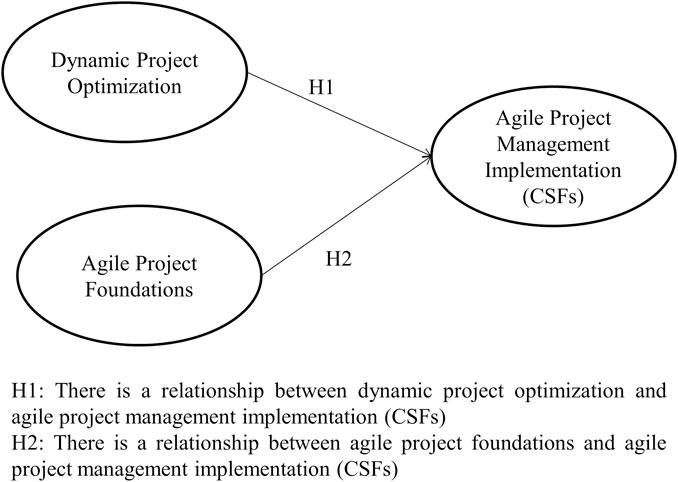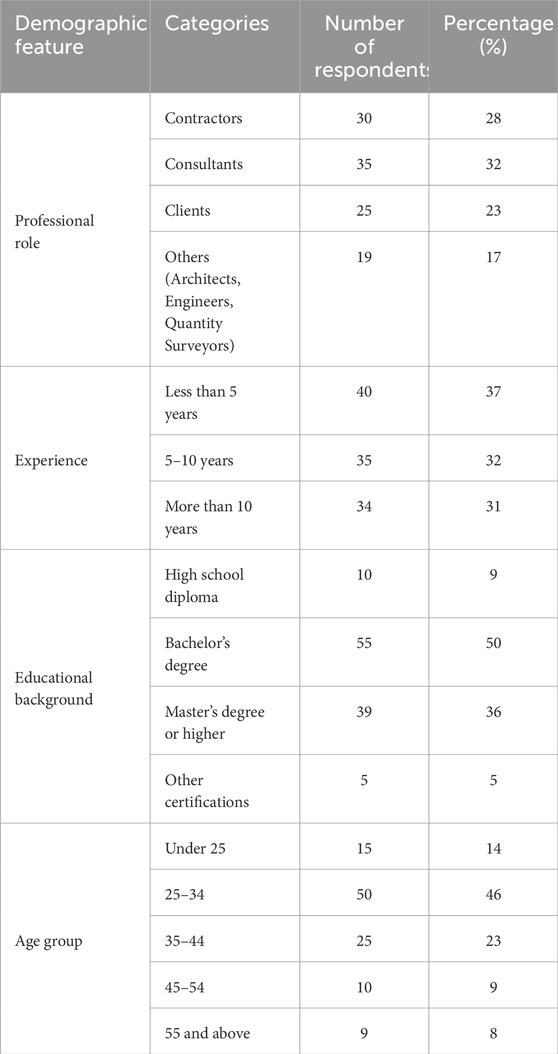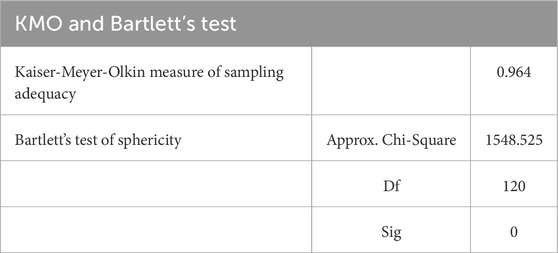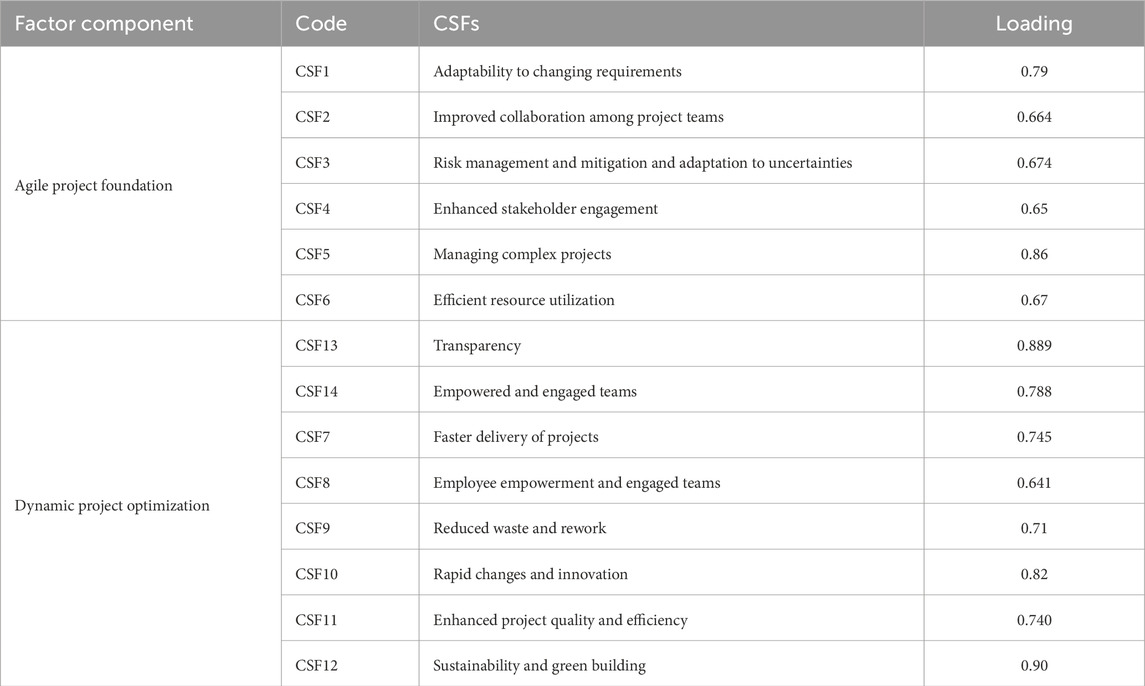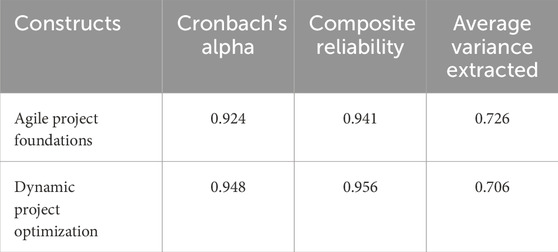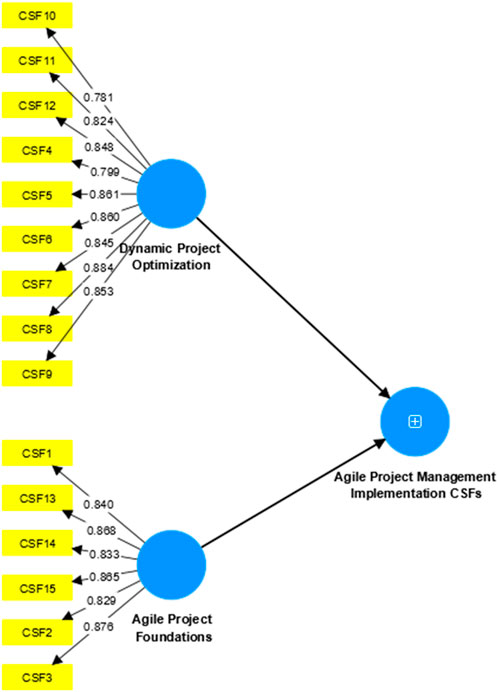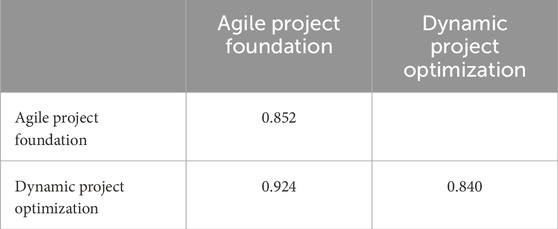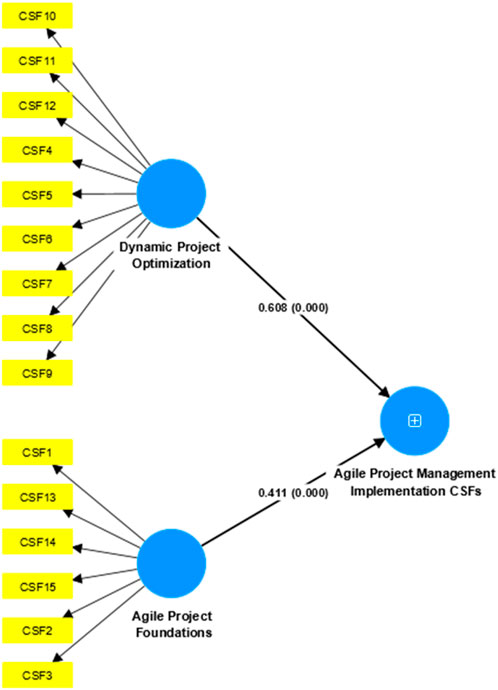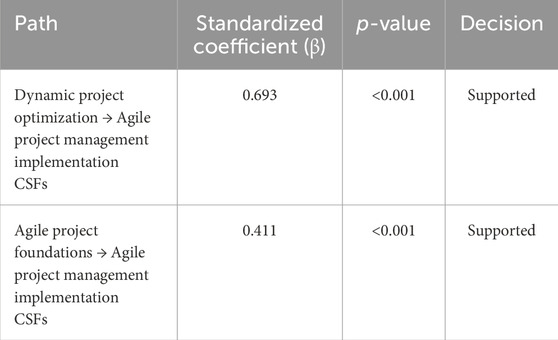- 1College of Project Management, Built Environment, Asset & Maintenance Management, School of Engineering and Technology, Central Queensland University, Melbourne, Australia
- 2Department of Quantity Surveying Research Group on Sustainable Infrastructure Management Plus, Federal University of Technology Akure, Akure, Nigeria
- 3Construction and Project Management Research Institute, Housing and Building National Research Centre, Giza, Egypt
- 4School of Computing, Engineering & Digital Technologies, Teesside University, Middlesbrough, United Kingdom
- 5Department of Marketing, College of Business Administration, Prince Sattam bin Abdulaziz University, Al-Kharj, Saudi Arabia
- 6Department of Civil Engineering, Middle East University, Amman, Jordan
Sustainability principles should be incorporated into all decision-making stages for residential construction projects to ensure maximum revenue while maintaining essential residential building services. This study identifies and analyzes the critical success factors (CSFs) necessary for implementing agile project management (APM) in residential construction projects. Data were collected from 120 professionals in the Nigerian construction industry through questionnaire surveys to understand the implementation of APM. The CSFs were obtained from previous research and analyzed within the specific context of the Nigerian construction industry through questionnaire surveys. The CSFs were grouped into two main categories using exploratory factor analysis: dynamic project optimization and agile project foundations. The model for the CSFs was developed using partial least squares structural equation modeling. The study found that the dynamic project optimization element had the most significant impact on the model, highlighting its importance as a key CSF in APM implementation. These results support the adoption of APM within Nigeria’s construction industry as stakeholders and professionals seek effective strategies to reduce costs and improve sustainability.
1 Introduction
The construction industry significantly affects the global economy, driving development and infrastructure projects across both developed and developing countries. However, this industry is heavily influenced by cultural, economic, and environmental factors. For instance, construction activities account for more than 40% of the world’s electricity usage and approximately 30% of global greenhouse gas emissions (Min et al., 2022). In Europe and the United States, the construction industry accounts for approximately 40% of the total energy used (Shoemaker, 2023). In developing nations, the construction industry provides essential benefits and services that contribute to the growth and improvement of the quality of life in these regions. Policymakers in African countries seek to diversify their resources through infrastructure and manufacturing investments (Bwanali and Rwelamila, 2017; Lu et al., 2015). Thus, the requirements for construction in African developing nations differ from those in industrialized countries, particularly regarding climate and environmental factors. Consequently, the construction sector in these countries still requires significant improvement to meet international quality benchmarks (Kineber et al., 2021). Although the construction industry is a major energy consumer and has a considerable impact on the environment, research has shown that sustainability can be achieved in this sector (Kineber et al., 2020).
Incorporating sustainable practices in the construction industry is essential as it encompasses a range of environmental, social, and economic considerations (Moshood et al., 2024). The sector’s substantial resource consumption and environmental effects necessitate prompt action (Lima et al., 2021). However, the conventional waterfall project management methodology, with its linear and sequential approach, poses several obstacles to integrating sustainability principles into construction projects. According to Fathalizadeh et al. (2019), one of the primary hindrances to achieving sustainability is a lack of understanding of its potential advantages and the high economic risks involved. Furthermore, practitioners frequently adopt a silo-based approach and fail to cooperate adequately. This absence of cooperation can lead to resistance to change from conventional working practices as well as a lack of understanding of the processes and workflows necessary for sustainability, as noted by Olawumi et al. (2018). Additionally, the Waterfall model does not provide a systematic approach to planning and acting to fulfill sustainability objectives, nor does it consider sustainability in construction project portfolio management, as emphasized by Siew (2016). Furthermore, the model’s constraints in accommodating iterative improvements, engaging with community and stakeholder feedback, and prioritizing social aspects such as worker safety and community wellbeing underscore the need for more adaptive and flexible project management approaches to attain sustainability in construction, as highlighted by Lalmi et al. (2021).
Agile project management (APM), a flexible and collaborative approach that emphasizes continuous improvement, has gained popularity in software development and is now being explored for other project types (Dong et al., 2024). This methodology is characterized by its focus on self-managing teams and its four key principles: minimum critical specification, autonomous teams, redundancy, and feedback and learning (Dybå et al., 2014). The incorporation of agile practices in construction projects can lead to more sustainable outcomes by improving adaptability to changing requirements, enhancing client satisfaction, increasing project transparency, and improving risk management and project delivery timelines (Pinto et al., 2023). The AgiLean project management framework, which combines lean and agile principles, can further enhance flexibility and eliminate waste in construction projects (Demir et al., 2012). Its value-driven prioritization and early risk identification contribute to economic sustainability by ensuring cost efficiency and maximizing return on investment (Sertyesilisik, 2014a). Agile emphasis on collaboration and regular feedback fosters social sustainability, addresses community needs, and improves worker satisfaction (Arefazar et al., 2022). A comprehensive view of the methodology encourages thorough consideration of sustainability factors across all project phases. Agile principles align closely with the objectives of sustainable construction, offering a dynamic framework that can lead to more environmentally friendly, economically viable, and socially responsible construction projects (Ershadi et al., 2021).
The integration of agile methodologies with sustainability in the construction industry, particularly in developing countries, presents several research gaps. According to Fathalizadeh et al. (2019) and Freitag et al. (2019), there is an insufficient understanding and awareness of sustainability practices, as well as a need for the dissemination of knowledge in this area. Interest in sustainability has increased in Nigeria’s construction industry (Daniel et al., 2018; Esezobor, 2016; Toriola-Coker et al., 2018; Zuofa and Ochieng, 2021). However, the adoption of sustainable construction practices faces challenges such as a lack of expertise, strategy, and demand (Daniel et al., 2018; Dania, 2017). Despite the potential significance of APM in construction project delivery (Esangbedo and Ealefoh, 2021), its integration with sustainability has not been thoroughly explored. The need for a value shift towards sustainability (Esezobor, 2016) and the importance of social sustainability and procurement (Okeke et al., 2023) further highlight the research gap in the integration of agile methodologies and sustainability in the Nigerian construction industry.
The primary purpose of this study is to investigate how APM methodologies can be effectively integrated with sustainability practices to enhance residential construction projects in Nigeria. This research aims to bridge the gap between agile methodologies and sustainable construction practices by addressing the following aspects.
1. Identify the critical success factors (CSFs) necessary for implementing APM in sustainable residential construction projects within the Nigerian context.
2. Develop a model using partial least squares structural equation modeling (PLS-SEM) to understand the relationships between the identified CSFs and the successful implementation of APM in sustainable residential construction.
3. Provide practical recommendations for stakeholders in the Nigerian construction industry to enhance project management practices and achieve sustainability objectives.
2 Literature review
APM operates as a transformative approach to managing complex projects, particularly in environments where requirements are fluid and difficult to define from the outset. This methodology, which has gained widespread acceptance in the software industry, is increasingly being incorporated into the construction sector due to its adaptability, emphasis on collaboration, and iterative development processes. The integration of APM into the construction and other sectors is driven by several key factors that align with the unique challenges and demands of managing projects in today’s fast-paced and uncertain business environments.
A core principle of APM is its ability to adapt to changing requirements, which is crucial in a dynamic and evolving business world. Conventional project management techniques often fall short when it comes to navigating intricate organizational structures and fluctuating business demands. This shortcoming highlights the need for a more flexible and responsive methodology like APM (Augustine et al., 2005; Macheridis, 2009a; Salameh, 2014; Shenhar, 2004; Weinstein, 2009). Enhanced collaboration within project teams is another fundamental principle of APM, which promotes continuous feedback and iterative learning. This approach extends to interactions with customers, facilitating direct and frequent communication that is essential for managing changes and ensuring that project evolution aligns with customer expectations (Hidalgo, 2019).
Improving stakeholder involvement is a critical aspect of APM. This methodology focuses on customer feedback, continuous improvement, and cooperative development to ensure that projects deliver value and meet stakeholders’ priorities (Hidalgo, 2019; Salameh, 2014). As projects become increasingly complex and involve a wide range of stakeholders and politically sensitive environments, APM’s effective management of such intricacies proves beneficial (Harvett, 2013; Hillson and Simon, 2007; van Marrewijk et al., 2008). Agile methodologies are well-known for improving project quality and efficiency, with continuous collaboration and adaptive processes resulting in better project outcomes and higher customer satisfaction (Salameh, 2014; Sharma et al., 2012).
APM’s focus on short-term scope, planning, and design facilitates efficient resource utilization and faster project delivery, allowing for rapid adjustments in response to changes and saving time and resources (Cervone, 2011; Sharma et al., 2012). Additionally, agile principles promote employee empowerment and engaged teams, which encourages decision-making, ownership, and innovative problem-solving within project teams (Beck et al., 2013; Nerur et al., 2005; Stare, 2013). Agile practices contribute to reduced waste and rework, rapid changes and innovation, early issue identification, environmental sustainability, and the ability to adapt quickly to new technologies and stakeholder priorities (Arefazar et al., 2022; Leybourne, 2009; Sertyesilisik, 2014b). Incorporating APM into construction is increasingly vital for sustainability and green building practices, aligning well with sustainable construction objectives and environmental stewardship (Franks and Vanclay, 2013). APM enhances transparency through direct communication, customer collaboration, and iterative feedback loops, in contrast to traditional methods where transparency may be less of a priority (Betta and Boronina, 2018; Betta and Jastrzębska, 2017).
APM can significantly support sustainability practices in construction by fostering adaptability, collaboration, and efficient resource management. The Agile Building Adaptation (AgiBuild) framework, for instance, emphasizes user-centric approaches and adaptability, which can drive innovation and enhance productivity in building adaptation projects, ultimately leading to more sustainable outcomes (Ng et al., 2023). Agile methodologies encourage a culture of continuous improvement and responsiveness to change, which aligns well with the dynamic nature of sustainability requirements in construction projects (Silva et al., 2022). By integrating agile practices, construction teams can better manage the economic, environmental, and social aspects of sustainability, ensuring that projects are not only completed efficiently but also meet high sustainability standards (Moshood et al., 2024). Furthermore, APM can facilitate the implementation of sustainability interventions by providing a structured yet flexible approach to project management, which is crucial for addressing the fragmented and diverse data typical in construction projects (Rodrigues et al., 2022).
In summary, the widespread adoption of APM across various sectors, including construction, can be attributed to its versatility, collaborative approach, and ability to manage complex and unforeseeable circumstances. Additionally, its focus on stakeholder participation, risk minimization, and sustainability further enhances its use as a solution for current project management challenges. Table 1 displays a compilation of 13 CSFs, which have been identified in the existing literature and are essential for the successful implementation of APM.
3 Research method and model development
Figure 1 illustrates the conceptual framework for this study, including the relationships between the identified CSFs and the successful implementation of APM. In this study, the drivers of integrating APM with sustainability practices in Nigerian construction projects are considered as the CSFs. As illustrated in Figure 2, this study utilized a quantitative research methodology, distributing a comprehensive questionnaire to residential building experts with substantial industry experience. The data obtained were analyzed by exploratory factor analysis (EFA) using the Statistical Package for the Social Sciences (SPSS).
PLS-SEM has become widely used in various fields, including social sciences, owing to its robustness in handling non-normal data and its effectiveness in modeling latent variables with smaller sample sizes (Henseler et al., 2016). Furthermore, studies that use PLS-SEM have been prominently featured in leading journals listed on the Social Sciences Citation Index (Banihashemi et al., 2017; Hult et al., 2018; Lee and Hallak, 2018). The most current version of the software, SMART-PLS 3.3.9, was used to perform the inferential analysis of the collected data. This inferential analysis aimed to explore the causal relationships between independent (exogenous) and dependent (endogenous) variables in relation to CSFs (Hair et al., 2017; Hair et al., 2011). The statistical analysis approach in this study included the evaluation of both measurement and structural models using appropriate techniques.
3.1 Data collection and case study
This study investigates the CSFs of APM within Nigeria’s residential construction industry. To ensure the representativeness and relevance of our findings, we conducted a comprehensive demographic analysis of the survey participants. As detailed in Table 2, the respondents comprise a diverse mix of professionals, including contractors, consultants, clients, architects, engineers, and quantity surveyors. This varied demographic profile is crucial for capturing a broad spectrum of insights and experiences pertinent to APM implementation. To collect this data, we employed two non-probability sampling methods: purposive (judgment) sampling and snowball sampling. Purposive sampling was particularly efficient and cost-effective, enabling the selection of participants directly involved in or knowledgeable about APM in the construction sector. Conversely, snowball sampling expanded our coverage by leveraging the networks of initial respondents, who recommended additional professionals. This method effectively broadened the diversity of viewpoints by creating a referral network that enriched the study’s data set.
The survey was structured into three sections: (1) respondents’ demographic information; (2) inquiries about the APM CSFs listed in Table 1; and (3) open-ended questions to identify any CSFs deemed crucial by the respondents. The APM CSFs were evaluated using a 5-point Likert scale, with 5 indicating “extremely high”, 4 signifying “high”, 3 meaning “moderate”, 2 signifying “low”, and 1 indicating “none or very low”. To determine the appropriate sample size, the methodological analysis recommended by Badewi (2016) suggested that a sample size exceeding 100 was suitable for survey studies. A total of 109 responses were obtained from 120 individuals, resulting in a response rate of 90%. This response rate was considered satisfactory based on the findings of previous studies (Kothari, 2004; Wahyuni, 2012).
3.2 Common method variance
The emergence of common method variance (CMV) can lead to common method bias (CMB), which can cause discrepancies in the results of analysis because of the measurement method rather than the constructs the measurements aim to represent. Conversely, the CMV is defined as an overlap in the variance attributed to the constructs and measurement instruments used (Podsakoff et al., 2003). CMV becomes particularly problematic when data are collected from a single source, such as a self-administered questionnaire (Glick et al., 1986; Strandholm et al., 2004). In these situations, self-reported data may introduce issues either by inflating or diminishing observed relationships (Strandholm et al., 2004; Williams et al., 1989). Given that this study relied on subjective, self-reported data from a single source, addressing these potential concerns to mitigate the impact of CMV is critical. To this end, a formal systematic one-factor test, as outlined in Harman’s 1976 experiment, was implemented (Podsakoff et al., 2003). Factor analysis revealed that the dominant factor accounted for most of the variance, as noted by Strandholm et al. (2004).
3.3 Construct validity analysis
Assessing the measurement model, commonly known as confirmatory factor analysis, typically serves as the initial step in examining the PLS-SEM outcomes. Conversely, EFA was used to verify the statistical significance of the constructs before their aggregation into clusters (Williams et al., 2010). The EFA applies to data that possess either interval or ordinal properties, demonstrating that variables can exhibit varying degrees or no interconnectedness, as depicted in a scatterplot. The objective of EFA is to simplify factors into grouped categories that subsequently encompass a range of variables. The procedure is shown in Equation 1.
Where,
For this research, EFA was used to uncover the foundational constructs central to the APM CSFs and to assess the measurement items of each construct for validity verification. Principal component analysis (PCA) is favored for its higher precision and simpler conceptual basis compared to alternatives such as alpha factoring, image factoring, maximum likelihood, and principal axis factoring (Field, 2009). As indicated by Williams et al. (2010), PCA is particularly effective in situations devoid of pre-established theories or models and when seeking initial solutions through EFA, making it the default option in numerous statistical software and a prevalent choice for EFA applications. The varimax rotation method was selected over direct oblimin or promax rotation because of its superior capability to optimize the distribution of loadings among variables. This advantage positions varimax as the preferred method for straightforward EFAs, offering an efficient method to facilitate the clustering of variables (factors) (Costello and Osborne, 2005). The analysis included 18 variables, all of which fit EFA (Olanrewaju et al., 2021).
3.4 Measurement model
To analyze the outcomes of PLS-SEM, the initial step involves evaluating the measurement (outer) model, also referred to as confirmatory factor analysis. This procedure elucidates the associations between observed variables and their underlying latent constructs (Al-Ashmori et al., 2020). Subsequently, the convergent and discriminant validity of the measurement model were assessed.
3.4.1 Convergent validity
Convergent validity is a measure of the extent to which various measures of the same construct cluster agree and is a subset of construct validity (Hulland, 1999). Multiple tests are typically conducted to evaluate convergent validity, including average variance extracted (AVE), Cronbach’s alpha, and composite reliability (CR) (Fornell and Larcker, 1981). A CR value of 0.70 or higher is typically considered acceptable, while higher values for AVE, Cronbach’s alpha, and CR indicate greater reliability (Wong and bulletin, 2013). AVE is a critical measure for assessing convergent validity and a value of 0.50 or higher, is required (Wong and bulletin, 2013).
3.4.2 Discriminant validity
This highlights the unique empirical nature of the phenomena under investigation, and the extent to which the model factors are distinct and not highly interconnected (Hair et al., 2010). To establish discriminant validity, the similarity between the measures designed to be disparate must remain insignificant.
3.5 Structural model
The primary objective of this study is to investigate the effect of CSFs of APM on the construction industry. This entails determining the causal relationship between the CSFs of APM constructs (£) and the implementation of APM CSFs (µ) in a unidirectional manner. Equation 2 illustrates the structural relationship between £, µ, and €1 within the structural model (inner relationship), as detailed by Zaid Alkilani (2018).
Where (β) is the path route coefficient that links the CSFs of the APM construct, and the residual variance at this structural level is predicted to reside in Equation 1. This equation can be found here: In addition, the weight of the standardized regression is denoted by the symbol, which is the same as the weight of the multiple regression model. To determine whether the path coefficient, denoted by, was statistically significant, a bootstrapping method included in the Smart PLS program was utilized to calculate the standard deviations of the path coefficients. In accordance with the study by (Henseler et al., 2016), the bootstrap was carried out with 5,000 subsamples which defined the t-statistics for the model. For the PLS Model, four structural equations for the APM CSFs constructs were formulated, which represented the inner relationship between the constructs and Equation 2.
4 Data analysis and results
4.1 Common method bias
CMB is a type of inconsistency or measurement error that can compromise the validity of research findings. Costello and Osborne (2005) defined the systematic error variance connected with both estimated and measured variables. One commonly used method to assess this bias is Harman’s single-factor test, which evaluates various structural dimensions (Demirkesen and Tezel, 2022). In this study, we employed a single-factor test to gauge the variance attributed to the standard method (Olanrewaju et al., 2021). When the total variance accounted for by the factors was less than 50%, CMB did not significantly influence the results. The results indicated that the primary group of factors contributed 21.75% of the total variance, suggesting that CMB did not notably impact the findings, as it was well below the 50% criterion (Demirkesen and Tezel, 2022).
4.2 Exploratory factor analysis
Table 3 presents the Kaiser-Meyer-Olkin (KMO) measure of sampling adequacy, which confirms that the collected data are appropriate for factor analysis. Furthermore, Bartlett’s test of Sphericity demonstrated a significant correlation between the variables. This test evaluates the feasibility of conducting factor analysis on the data or samples in question.
The KMO measure, set at 0.964, indicated that 96.4% of the collected data were suitable for factor analysis. As shown in Table 3, the p-value is less than 0.05, indicating that the data are ready for factor analysis, with a degree of freedom of 120 and an approximate chi-square of 1548.535. Additionally, Bartlett’s test yielded a highly significant result (p-value = 0.000), suggesting that the correlation constitutes an identity matrix. This indicates a significant correlation at the 5% level among all items listed, making EFA appropriate.
In PCA, loadings are used to indicate the correlation between a factor and an original variable, serving as a measure of the factor’s ability to explain the variable. The loadings are used to classify the variables into three distinct levels of contribution to Factor 1, namely, high, medium, and low. These classifications are then used to group the CSFs into two categories: dynamic project optimization and agile project foundations. The categorization is based on the contribution of each CSF to Factor 1 and serves as a useful tool for analyzing the relative importance of each factor in the context of a project. Table 4 shows the rotated component matrix of the problems associated with APM and it is grouped into four factors, namely, agile project foundation and dynamic project optimization.
4.3 Structural equation modeling
4.3.1 Convergent validity
Evaluating reflective measurement models using PLS-SEM requires an assessment of convergent validity, discriminant validity, and internal reliability. Once the reliability and validity of the measurement model were established, the structural model was evaluated (Hair et al., 2010). As shown in Table 5, all constructs in the model meet the specified thresholds (with values >0.70), which denotes their acceptability (Hair et al., 2016).
Table 5 presents evidence that the constructs exhibit satisfactory levels of internal consistency, as their AVE values are greater than 0.5 (Fornell and Larcker, 1981). This suggests that the measurement model has a strong internal consistency and convergence. Moreover, these results imply that the indicators used to measure each construct are precise and distinct from one another. The high outer loadings observed for the items associated with each construct indicate a strong association between them. According to the recommended threshold, items with outer loadings below 0.4 should be excluded (Hair et al., 2011). As illustrated in Figure 3, all items in the measurement models met the acceptable criteria for outer loading.
4.3.2 Discriminant validity
Table 6 indicates that the square roots of the AVE values have stronger correlations within their respective constructs than with any other construct. This finding suggests that there were no prior links between the constructs. Furthermore, the data show that every predictor achieved its highest loading on the intended construct, emphasizing the adequacy of the constructs. This indicates that a significant degree of one-dimensionality can be achieved for each construct.
4.3.3 Path model validation
The variance inflation factor (VIF) was assessed to evaluate the extent of collinearity among the formative indicators of the constructs. In this study, the VIF values for all indicators were below 3.5, suggesting that the subdomains made a substantial contribution to higher-level constructs. Additionally, bootstrapping was applied to determine the statistical significance of the path coefficients, which showed that all paths were statistically significant, as shown in Figure 4 and detailed in Table 7 (Hulland, 1999).
5 Discussion
The results of the SEM analysis show that the implementation of APM for sustainable residential building projects is closely aligned with the findings of Macheridis (2009b) and Salameh (2014). These scholars emphasized the intricate nature of the construction industry and its business processes. Projects involve various stakeholders such as strategic suppliers, outsourced vendors, diverse customers, partnerships, and competitors, which require a flexible and adaptable project management approach to meet the varying demands and ensure timely delivery of services and products to achieve project completion and customer satisfaction.
The findings of the SEM highlight the significance of adaptability to evolving requirements, heightened collaboration among project teams, intensified stakeholder engagement, and optimum resource utilization as essential success factors in the agile project framework. These elements are crucial for managing intricacies and nurturing a cooperative atmosphere with all parties involved, including suppliers, vendors, and customers. Agile methodologies, with their focus on flexibility, relentless improvement, and stakeholder involvement, equip project managers with the requisite means to tackle these challenges efficiently.
The dynamic project optimization framework is designed to handle complex construction projects, incorporating rapid changes and innovation while emphasizing sustainability and green building practices. This framework recognizes the importance of adapting to the complex and dynamic environments of today’s construction projects. By prioritizing efficient and sustainable project completion, this framework caters to the need for quick service delivery and high levels of customer satisfaction.
Therefore, the results of the SEM analysis not only confirm the CSFs recognized for the effective implementation of APM in the construction sector but also corroborate the claims made by Salameh (2014) and Macheridis (2009b). This underscores the importance of adopting a flexible and adaptive project management approach to navigate the intricate nature of contemporary construction projects and to achieve timely, efficient, and satisfactory results for all stakeholders involved. The alignment between the outcomes of the SEM analysis and observations made by Salameh and Mecheridis highlights the relevance and applicability of APM methodologies in addressing the present challenges confronting the construction industry.
5.1 Managerial implications
• The development of the final model, based on CSFs, provides an exemplary blueprint for residential building professionals (such as contractors, project owners, and stakeholders) to implement APM more effectively in their projects. It acts as a benchmarking tool or framework to enable successful transformation within the processes and operations of the construction industry through APM. This transformation is crucial for developing countries such as Nigeria, aiming for a competitive, stable, and sustainable economic landscape. The model and roadmap developed in this study highlight the urgency of emerging economies to foster the adoption of APM methodologies (Oke and Aghimien, 2018). This push is vital because these countries often face hurdles in embracing new technologies, including cost constraints, technological expertise, and a widespread lack of awareness of APM methodologies. As illustrated in this study, APM methodologies offer a pathway for embedding sustainability and other key innovations into the design phases of construction projects (Kineber et al., 2023; Oke et al., 2023). Consequently, this study enriches the literature by detailing various ways in which APM can advance the construction industry.
• First, this research creates a foundation for understanding the standards of the APM methodology and the factors that affect them, aiming to evaluate their potential for success and growth in the global market through the integration of the APM methodology.
• Second, it advocates for professionals in the residential building sector (including contractors, project owners, and stakeholders) to initiate the adoption of APM methodology in their projects, enhancing the effectiveness, planning, constructability, and uniformity of their construction.
• Third, it offers concrete evidence to developing countries such as Nigeria that the advantages of embracing APM far surpass its limitations.
• Fourth, developed countries have led the application and research of the APM methodology. Countries such as Australia, China, Hong Kong, Saudi Arabia, the United Kingdom, and the United States have been researching the impact of APM methodology on their construction industries. With limited research in the context of developing countries, including Nigeria, this study promotes a shift from traditional construction practices to a more digitalized method. This study bridges a significant gap by introducing APM to the Nigerian construction industry. This serves as a reference for future research on integrating the APM methodology into Nigeria’s construction industry processes and activities.
• This study also stands out for its methodological contribution. Previous research on APM in the construction industry has often relied on a range of statistical techniques such as analysis of variance, content analysis, multiple analysis of variance, and regression modeling. By adopting PLS-SEM, this study overcame the limitations associated with traditional first-generation analysis methods.
• This study additionally provides a thorough insight into the myriad motivations behind adopting and deploying the APM methodology in the construction industry’s procedures and actions. Beyond fostering sustainability in projects, the APM methodology can contribute to the timely completion of projects, enhance information flow throughout the organization, increase efficiency in operations, improve communication processes, encourage innovation, heighten the international competitiveness of construction project delivery, and enhance return on investment, among others.
• This research additionally offers residential building professionals (such as contractors, project owners, and stakeholders) insights into how to embed APM methodology within the construction industry, thereby boosting project performance.
• Moreover, this study provides substantial benefits to regulatory bodies within the construction sector, particularly in policy formulation aimed at integrating this technology into the updated regulatory framework of the construction industry (Kineber et al., 2023; Oke et al., 2023). By analyzing the CSFs and integration factors, the APM methodology can be smoothly and incrementally introduced into Nigerian construction processes.
5.2 Theoretical implications
Although the concept of sustainable development is not new, it plays a crucial role in shaping perceptions of the construction industry’s operations and activities (Broccardo and Zicari, 2020; Baldassare et al., 2020). This study highlights the significance of integrating the APM methodology in constructing sustainable residential projects. It aims to identify and assess the CSFs necessary for implementing the APM methodology in developing countries, with Nigeria serving as a focal point. The evaluation of these CSFs was essential in navigating the challenges of APM’s successful deployment in Nigeria’s construction sector. This study presents a unique aim as APM CSFs have not been examined previously in the Nigerian context. Thus, this study established a benchmark for future research on the integration of APM into the practices and processes of Nigeria’s construction industry. The two constructs of the APM CSFs were rigorously tested using PLS-SEM, with insights derived from both the analysis and bootstrapping methods (Hair et al., 2010).
6 Conclusion
APM methodology is regarded as an essential tool for enhancing value and promoting project goals and sustainability worldwide. However, its adoption in developing countries has progressed slowly and significant strides are still required. In places such as Nigeria, the integration of the APM methodology faces numerous obstacles, which have led to uneven progress in infrastructure development. Implementing the APM methodology in Nigeria’s construction sector is a key strategy to address these issues.
This study leveraged PLS-SEM to investigate the CSFs for applying the APM methodology in Nigeria’s construction industry. The CSFs identified in the literature underwent EFA before further investigation using PLS-SEM. This study’s reliance on a purely quantitative analysis to assess CSFs is a limitation. Future research could enhance the robustness by incorporating qualitative or mixed-method approaches to address the drawbacks of a single-method approach. The use of purposive and snowball sampling methods in this study also restricts the generalizability of the findings to a broader population.
While this study provides valuable insights into the CSFs for APM implementation in Nigeria’s construction industry, several limitations should be acknowledged. The reliance on a purely quantitative analysis limits the depth of understanding that could be gained from qualitative insights. Future research should consider employing qualitative or mixed-method approaches to provide a more comprehensive analysis of the CSFs. Furthermore, the sampling methods used, purposive and snowball sampling, may introduce biases and limit the generalizability of the findings. Future studies should explore alternative sampling strategies to minimize these biases and enhance the representativeness of the results.
In conclusion, while this study sheds light on the critical factors for APM adoption in the Nigerian construction sector, ongoing research is needed to refine these findings and support the broader application of APM principles in diverse construction environments. Future research should also investigate the long-term impacts of APM implementation on project outcomes and sustainability in developing countries.
Data availability statement
The raw data supporting the conclusions of this article will be made available by the authors, without undue reservation.
Author contributions
AK: Conceptualization, Data curation, Formal Analysis, Funding acquisition, Investigation, Methodology, Project administration, Resources, Software, Supervision, Validation, Visualization, Writing–original draft, Writing–review and editing. AO: Conceptualization, Data curation, Formal Analysis, Funding acquisition, Investigation, Methodology, Project administration, Resources, Software, Supervision, Validation, Visualization, Writing–original draft, Writing–review and editing. NE: Conceptualization, Data curation, Formal Analysis, Funding acquisition, Investigation, Methodology, Project administration, Resources, Software, Supervision, Validation, Visualization, Writing–original draft, Writing–review and editing. ZA: Conceptualization, Data curation, Formal Analysis, Funding acquisition, Investigation, Methodology, Project administration, Resources, Software, Supervision, Validation, Visualization, Writing–original draft, Writing–review and editing. ME: Conceptualization, Data curation, Formal Analysis, Funding acquisition, Investigation, Methodology, Project administration, Resources, Software, Supervision, Validation, Visualization, Writing–original draft, Writing–review and editing. AZ: Conceptualization, Data curation, Formal Analysis, Funding acquisition, Investigation, Methodology, Project administration, Resources, Software, Supervision, Validation, Visualization, Writing–original draft, Writing–review and editing. MA: Conceptualization, Data curation, Formal Analysis, Funding acquisition, Investigation, Methodology, Project administration, Resources, Software, Supervision, Validation, Visualization, Writing–original draft, Writing–review and editing. SI: Project administration, Resources, Software, Supervision, Validation, Visualization, Writing–original draft, Writing–review and editing, Conceptualization, Data curation, Formal Analysis, Funding acquisition, Investigation, Methodology.
Funding
The author(s) declare that financial support was received for the research, authorship, and/or publication of this article. This study is supported via funding from Prince Sattam bin Abdulaziz University project number (PSAU/2024/R/1445). Furthermore, the authors express their gratitude to the Middle East University in Amman, Jordan for providing financial support to cover the publication fees associated with this research article.
Acknowledgments
The authors express their gratitude to the Middle East University in Jordan for providing financial support to cover the publication fees associated with this research article.
Conflict of interest
The authors declare that the research was conducted in the absence of any commercial or financial relationships that could be construed as a potential conflict of interest.
Publisher’s note
All claims expressed in this article are solely those of the authors and do not necessarily represent those of their affiliated organizations, or those of the publisher, the editors and the reviewers. Any product that may be evaluated in this article, or claim that may be made by its manufacturer, is not guaranteed or endorsed by the publisher.
References
Ahimbisibwe, A., Cavana, R. Y., and Daellenbach, U. (2015). A contingency fit model of critical success factors for software development projects. J. Enterp. Inf. Manag. 28 (1), 7–33. doi:10.1108/JEIM-08-2013-0060
Al-Ashmori, Y. Y., Othman, I., Rahmawati, Y., Amran, Y. H. M., Sabah, S. H. A., Rafindadi, A. D. u., et al. (2020). BIM benefits and its influence on the BIM implementation in Malaysia. Ain Shams Eng. J. 11 (4), 1013–1019. doi:10.1016/J.ASEJ.2020.02.002
Arefazar, Y., Nazari, A., Hafezi, M. R., and Maghool, S. A. H. (2022). Prioritizing agile project management strategies as a change management tool in construction projects. Int. J. Constr. Manag. 22 (4), 678–689. doi:10.1080/15623599.2019.1644757
Augustine, S., Payne, B., Sencindiver, F., and Woodcock, S. (2005). Agile project management: steering from the edges. Commun. ACM 48 (12), 85–89. doi:10.1145/1101779.1101781
Badewi, A. (2016). Investigating benefits realisation process for enterprise resource planning systems. Available at: https://dspace.lib.cranfield.ac.uk/handle/1826/9719.
Baldassarre, B., Keskin, D., Diehl, J. C., Bocken, N., and Calabretta, G. (2020). Implementing sustainable design theory in business practice: a call to action. J. Clean. Prod. 273, 123113. doi:10.1016/j.jclepro.2020.123113
Banihashemi, S., Hosseini, M. R., Golizadeh, H., and Sankaran, S. (2017). Critical success factors (CSFs) for integration of sustainability into construction project management practices in developing countries. Int. J. Proj. Manag. 35 (6), 1103–1119. doi:10.1016/J.IJPROMAN.2017.01.014
Beck, K. L., Beedle, M. A., Bennekum, A. V., Cockburn, A., Cunningham, W., Fowler, M., et al. (2013). Manif. Agile Softw. Dev., Available at: http://agilemanifesto.org/.
Betta, J., and Boronina, L. (2018). “Transparency in project management–from traditional to agile,” in Third international conference on economic and business management FEBM 2018, 446–449.
Betta, J., and Jastrzębska, J. (2017). “Management of research projects - lessons learned,” in Proceedings of CBU international conference on innovations science and education. Prague, 39–44.
Broccardo, L., and Zicari, A. (2020). Sustainability as a driver for value creation: a business model analysis of small and medium entreprises in the Italian wine sector. J. Clean. Prod. 259, 120852. doi:10.1016/j.jclepro.2020.120852
Bwanali, S., and Rwelamila, P. (2017). Public private partnerships: a possible alternative for delivery of in frastructure projects in Africa. Int. J. Constr. Supply Chain Manag. 7 (3), 93–109. doi:10.14424/ijcscm703017-93-109
Cervone, H. F. (2011). Understanding agile project management methods using Scrum. OCLC Syst. and Serv. Int. Digital Libr. Perspect. 27 (1), 18–22. doi:10.1108/10650751111106528
Costello, A. B., and Osborne, J. (2005). Best practices in exploratory factor analysis: four recommendations for getting the most from your analysis. Pract. Assess. Res. Eval. 10 (1), 7. doi:10.7275/jyj1-4868
Daniel, E., Oshineye, O., and Oshodi, O. (2018). “BARRIERS TO SUSTAINABLE CONSTRUCTION PRACTICE IN NIGERIA,” in Proceeding of the 34th annual ARCOM conference, 3-5 september 2018, belfast, UK, association of researchers in construction management, 149–158.
Demir, S., Bryde, D., and Ochieng, E. (2012). “Re-Conceptualizing lean in construction environments – the case for AgiLean project management,” in Procs 28th annual ARCOM conference, 3-5 september 2012. Editor S. D. Smith (Edinburgh, UK: Association of Researchers in Construction Management), 1013–1023.
Demirkesen, S., and Tezel, A. (2022). Investigating major challenges for industry 4.0 adoption among construction companies. Eng. Constr. Archit. Manag. 29 (3), 1470–1503. doi:10.1108/ECAM-12-2020-1059/FULL/XML
Dong, H., Dacre, N., Baxter, D., and Ceylan, S. (2024). What is Agile Project Management? Developing a new definition following a systematic literature review. Proj. Manag. J., 87569728241254095. doi:10.1177/87569728241254095
Dybå, T., Dingsøyr, T., and Moe, N. B. (2014). “Agile project management,” in Software project management in a changing world (Springer Berlin Heidelberg), 277–300. doi:10.1007/978-3-642-55035-5_11
Elkhatib, M., Al Hosani, A., Al Hosani, I., and Albuflasa, K. (2022). Agile project management and project risks improvements: pros and cons. Mod. Econ. 13, 1157–1176. doi:10.4236/me.2022.139061
Ershadi, M., Jefferies, M., Davis, P., and Mojtahedi, M. (2021). Incorporating environmental sustainability in project portfolio manage ment by construction contractors. Int. J. Struct. Civ. Eng. Res., 123–127. doi:10.18178/ijscer.10.3.123-127
Esangbedo, O. P., and Ealefoh, D. E. (2021). Prospects for the adoption of Agile Project Management techniques in N igerian construction industry. Niger. J. Technol. 40 (3), 357–362. doi:10.4314/njt.v40i3.1
Esezobor, E. L. (2016). Sustainability and construction: a study of the transition to sustain able construction practices in Nigeria.
Fathalizadeh, A., Ghoddousi, P., Javid, A. A. S., Hosseini, M. R., and Ghosh, A. (2019). “Integrating sustainability into construction project management: barriers in developing countries,” in 13th international conference modern building materials, structures and techniques. doi:10.3846/mbmst.2019.122
Field, A. (2009). Discovering statistics using SPSS. London: SAGE Publications. Available at: https://books.google.co.uk/books?id=a6FLF1YOqtsC.
Fornell, C., and Larcker, D. F. (1981). Evaluating structural equation models with unobservable variables and measurement error. J. Mark. Res. 18 (1), 39. doi:10.2307/3151312
Franks, D. M., and Vanclay, F. (2013). Social impact management plans: innovation in corporate and public policy. Environ. Impact Assess. Rev. 43, 40–48. doi:10.1016/j.eiar.2013.05.004
Freitag, A. E. B., Quelhas, O. L. G., França, S. L. B., and Meiriño, M. J. (2019). “Implementation of lean management: sustainability in the construction industry: the case of Brazilian companies,” in Accounting, finance, sustainability, governance and fraud: Theory an d application (Singapore: Springer), 25–44. doi:10.1007/978-981-32-9588-9_3
Glick, W. H., Jenkins, G. D., and Gupta, N. (1986). METHOD VERSUS SUBSTANCE: HOW STRONG ARE UNDERLYING RELATIONSHIPS BETWEEN JOB CHARACTERISTICS AND ATTITUDINAL OUTCOMES? Acad. Manag. J. 29 (3), 441–464. doi:10.2307/256218
Goel, A., Ganesh, L. S., and Kaur, A. (2019). Deductive content analysis of research on sustainable construction in India: current progress and future directions. J. Clean. Prod. 226, 142–158. doi:10.1016/j.jclepro.2019.03.314
Gomes Silva, F. J., Kirytopoulos, K., Pinto Ferreira, L., Sá, J. C., Santos, G., and Cancela Nogueira, M. C. (2022). The three pillars of sustainability and agile project management: how do they influence each other. Corp. Soc. Responsib. Environ. Manag. 29 (5), 1495–1512. doi:10.1002/csr.2287
Hair, J. F., Hult, G. T., Ringle, C., and Sarstedt, M. (2016) “A primer on partial least squares structural equation modeling (PLS-SEM) - joseph F. Hair,” in G. Tomas M. Hult, christian ringle, marko sarstedt. United States: Kennesaw State University, 374.
Hair, J. F., Black, W. C., Babin, B. J., and Anderson, R. E. (2010). in Multivariate data analysis. Editors J. F. Hair, W. C. Black, B. J. Babin, and R. E. Anderson 7th Edition (Upper Saddle River, NJ: Pearson Education, Inc.), 761. z-lib.org).pdf.
Hair, J. F., Matthews, L. M., Matthews, R. L., and Sarstedt, M. (2017). PLS-SEM or CB-SEM: updated guidelines on which method to use. Int. J. Multivar. Data Analysis 1 (2), 107–123. doi:10.1504/IJMDA.2017.087624
Hair, J. F., Ringle, C. M., and Sarstedt, M. (2011). PLS-SEM: indeed a silver bullet. J. Mark. Theory Pract. 19 (2), 139–152. doi:10.2753/MTP1069-6679190202
Hair, J. F., Ringle, C. M., and Sarstedt, M. J.M. theory, and Practice. (2011). PLS-SEM: indeed a silver bullet. , 19(2), 139–152. doi:10.2753/mtp1069-6679190202
Harvett, C. M. (2013). A study of uncertainty and risk management practice related to perceived project complexity. Available at: https://api.semanticscholar.org/CorpusID:166796992.
Henseler, J., Hubona, G., and Ray, P. A. (2016). Using PLS path modeling in new technology research: updated guidelines. Industrial Manag. Data Syst. 116 (1), 2–20. doi:10.1108/imds-09-2015-0382
Henseler, J., Hubona, G., Ray, P. A., and management, systems, data. (2016). Using PLS path modeling in new technology research: updated guidelines. , 116(1), 2–20. doi:10.1108/imds-09-2015-0382
Hidalgo, E. S. (2019). Adapting the scrum framework for agile project management in science: case study of a distributed research initiative. Heliyon 5 (3), e01447. doi:10.1016/j.heliyon.2019.e01447
Hillson, D., and Simon, P. (2007). Practical project risk management: the ATOM methodology. Manag. Concepts. Available at: https://books.google.co.uk/books?id=vHmbtAEACAAJ.
Hoda, R., Noble, J., and Marshall, S. (2008). “Agile project management,” in New Zealand computer science research student conference, NZCSRSC 2008 - proceedings. doi:10.1007/11499053_47
Hulland, J. (1999). Use of partial least squares (PLS) in strategic management research: a review of four recent studies. Strategic Manag. J., 20(2), 195–204. doi:10.1002/(SICI)1097-0266(199902)20:2<195::AID-SMJ13>3.0.CO;2-7
Hult, G. T. M., Hair, J. F., Proksch, D., Sarstedt, M., Pinkwart, A., and Ringle, C. M. (2018). Addressing endogeneity in international marketing applications of partial least squares structural equation modeling. J. Int. Mark. 26 (3), 1–21. doi:10.1509/jim.17.0151
Kineber, A. F., Oke, A. E., Elseknidy, M., Hamed, M. M., and Kayode, F. S. %J. S. (2023). Barriers to the implementation of radio frequency identification (RFID) for sustainable building in a developing economy. Sustainability 15 (1), 825. doi:10.3390/su15010825
Kineber, A. F., Othman, I., Oke, A. E., Chileshe, N., and Buniya, M. K. (2020). Identifying and assessing sustainable value management implementation activities in developing countries: the case of Egypt. Sustainability 12 (21), 9143. doi:10.3390/SU12219143
Kineber, A. F., Othman, I. B., Oke, A. E., and Chileshe, N. (2021). Modelling the relationship between value management’s activities and critical success factors for sustainable buildings. J. Eng. 20, 414–435. Design Technology. doi:10.1108/jedt-03-2021-0159
Kothari, C. R. (2004). Research methodology: methods and techniques. New Delhi: New Age International Publishers. Available at: https://books.google.co.uk/books?id=8c6gkbKi-F4C.
Lalmi, A., Fernandes, G., and Souad, S. B. (2021). A conceptual hybrid project management model for construction projects. Procedia Comput. Sci. 181, 921–930. doi:10.1016/j.procs.2021.01.248
Lee, C., and Hallak, R. (2018). Investigating the moderating role of education on a structural model of restaurant performance using multi-group PLS-SEM analysis. J. Bus. Res. 88, 298–305. doi:10.1016/J.JBUSRES.2017.12.004
Leybourne, S. (2009). Improvisation and agile project management: a comparative consideration. Int. J. Manag. Proj. Bus. 2 (4), 519–535. doi:10.1108/17538370910991124
Lim, S., and Yang, J. (2007). Enhancing sustainability deliverables for infrastructure project deliv ery.
Lima, L., Trindade, E., Alencar, L., Alencar, M., and Silva, L. (2021). Sustainability in the construction industry: a systematic review of the literature. J. Clean. Prod. 289, 125730. doi:10.1016/j.jclepro.2020.125730
Lu, W., Chen, X., Peng, Y., and Shen, L. (2015) Benchmarking construction waste management performance using big data. Resour., Conserv. Recycl., 105, 49–58.
Masood, Z., and Farooq, S. (2017). The benefits and key challenges of agile project management under recent research opportunities. Int. Res. J. Manag. Sci. 5 (1), 20–28.
Moshood, T. D., Rotimi, J. O., and Shahzad, W. (2024). Enhancing sustainability considerations in construction industry projects. Environ. Dev. Sustain., 1–27. doi:10.1007/s10668-024-04946-2
Nerur, S., Mahapatra, R., and Mangalara, G. (2005). Challenges of migrating to agile methodologies. Commun. ACM 48 (5), 73–78. doi:10.1145/1060710.1060712
Nunnally, J. C. (1994). Psychometric theory 3E. Tata McGraw-Hill Education. Available at: https://books.google.co.uk/books?id=_6R_f3G58JsC.
Oke, A. E., and Aghimien, D. O. (2018). Drivers of value management in the Nigerian construction industry. J. Eng. Des. Technol. Soc. 16, 270–284. doi:10.1108/jedt-02-2017-0012
Oke, A. E., Kineber, A. F., Elseknidy, M., and Kayode, F. S. (2023). Radio frequency identification implementation model for sustainable development: a structural equation modeling approach. Sustain. Dev., 31(3), 1824–1844. doi:10.1002/sd.2486
Okeke, F. O., Nnaemeka-okeke, R. C., and Awe, F. C. (2023). The imperative of social sustainability and procurement in the Nigeria n construction industry. E3S Web Conf. 377, 02001. doi:10.1051/e3sconf/202337702001
Olanrewaju, O. I., Kineber, A. F., Chileshe, N., and Edwards, D. J. (2021). Modelling the impact of building information modelling (BIM) implementation drivers and awareness on project lifecycle. Sustainability 13 (16), 8887. doi:10.3390/su13168887
Olawumi, T. O., Chan, D. W. M., Wong, J. K. W., and Chan, A. P. C. (2018). Barriers to the integration of BIM and sustainability practices in con struction projects: A Delphi survey of international experts. J. Build. Eng. 20, 60–71. doi:10.1016/j.jobe.2018.06.017
Pinto, H. W., Kerzner, R. R., and Cleland, J. D. (2023). Exploring the implementation of agile project management in the United States construction industry: benefits, challenges, and success factors. J. Entrepreneursh. and Proj. Manag. 7 (7), 11–23. doi:10.53819/81018102T4163
Podsakoff, P. M., MacKenzie, S. B., Lee, J. Y., and Podsakoff, N. P. (2003). Common method biases in behavioral research: a critical review of the literature and recommended remedies. J. Appl. Psychol. 88 (5), 879–903. doi:10.1037/0021-9010.88.5.879
Rico, D. F., Sayani, H. H., and Sone, S. (2009). The business value of agile software methods: maximizing ROI with just-in-time processes and documentation. Available at: https://api.semanticscholar.org/CorpusID:114710284.
Rodrigues, F., Alves, A. D., and Matos, R. (2022). Construction management supported by BIM and a business intelligence tool. Energies 15 (9), 3412. Article 9. doi:10.3390/en15093412
Salameh, H. (2014). What, when, why, and how? A comparison between agile project management and traditional project management methods. Int. J. Bus. Manag. Rev. 2 (5), 52–74.
Sertyesilisik, B. (2014a). “Lean and agile construction project management: as a way of reducing E nvironmental Footprint of the construction industry,” in Intelligent Systems, Control and automation: science and engineering (Netherlands: Springer), 179–196. doi:10.1007/978-94-017-8044-5_11
Sharma, S., Sarkar, D., and Gupta, D. (2012). Agile processes and methodologies: a conceptual study. Int. J. Comput. Sci. Eng. 4 (5), 892–898.
Shenhar, A. J. (2004). Strategic Project Leadership® toward a strategic approach to project management. R&D Manag., 34(5), 569–578. doi:10.1111/j.1467-9310.2004.00363.x
Shoemaker, S. (2023). NREL researchers reveal how buildings across United States do—and could—use energy. U.S. Department of Energy, United States: National Renewable Energy Laboratory. (Accessed July 23, 2024).
Siew, R. Y. J. (2016). Integrating sustainability into construction project portfolio management. KSCE J. Civ. Eng. 20 (1), 101–108. doi:10.1007/s12205-015-0520-z
Stare, A. (2013). Agile project management in product development projects. Procedia - Soc. Behav. Sci. 119, 295–304. doi:10.1016/j.sbspro.2014.03.034
Strandholm, K., Kumar, K., and Subramanian, R. (2004). Examining the interrelationships among perceived environmental change, strategic response, managerial characteristics, and organizational performance. J. Bus. Res. 57 (1), 58–68. doi:10.1016/S0148-2963(02)00285-0
Toriola-Coker, L. O., Alaka, H., Bello, W. A., Ajayi, S., Adeniyi, A., and Olopade, S. O. (2018). Sustainability barriers in Nigeria construction practice. IOP Conf. Ser. Mater. Sci. Eng. 1036 (1), 012023. doi:10.1088/1757-899x/1036/1/012023
van Marrewijk, A., Clegg, S. R., Pitsis, T. S., and Veenswijk, M. (2008). Managing public–private megaprojects: paradoxes, complexity, and project design. Int. J. Proj. Manag. 26 (6), 591–600. doi:10.1016/j.ijproman.2007.09.007
Wahyuni, D. (2012). The research design maze: understanding paradigms, cases, methods and methodologies. Available at: https://papers.ssrn.com/abstract=2103082.
Weinstein, B. (2009). Making a case for agile project management. Ghantthead. Com. Available at: http://www.gantthead.com/articles/articlesPrint.cfm?ID=249805.
Williams, B., Onsman, A., and Brown, T. (2010). Exploratory factor analysis: a five-step guide for novices. Australas. J. Paramedicine 8 (3), 1–13. doi:10.33151/ajp.8.3.93
Williams, L. J., Cote, J. A., and Buckley, M. R. (1989). Lack of method variance in self-reported affect and perceptions at work: reality or artifact? J. Appl. Psychol. 74 (3), 462–468. doi:10.1037/0021-9010.74.3.462
Wong, K. K.-K., and bulletin, J. M. (2013). Partial least squares structural equation modeling (PLS-SEM) techniques using SmartPLS. 24(1), 1–32.
Zaid Alkilani, S. (2018). Performance measurement and improvement model for small and medium contractors in developing countries.
Keywords: agile project management, critical success factors, residential construction, sustainability, sustainable buildings
Citation: Kineber AF, Oke AE, Elshaboury N, Abunada Z, Elseknidy M, Zamil A, Alhusban M and Ilori SA (2024) Agile project management for sustainable residential construction: A study of critical success factors. Front. Built Environ. 10:1442184. doi: 10.3389/fbuil.2024.1442184
Received: 01 June 2024; Accepted: 23 September 2024;
Published: 08 October 2024.
Edited by:
Moe Mojtahedi, University of New South Wales, AustraliaReviewed by:
Apurva Pamidimukkala, University of Texas at Arlington, United StatesLuciana Hazin Alencar, Federal University of Pernambuco, Brazil
Copyright © 2024 Kineber, Oke, Elshaboury, Abunada, Elseknidy, Zamil, Alhusban and Ilori. This is an open-access article distributed under the terms of the Creative Commons Attribution License (CC BY). The use, distribution or reproduction in other forums is permitted, provided the original author(s) and the copyright owner(s) are credited and that the original publication in this journal is cited, in accordance with accepted academic practice. No use, distribution or reproduction is permitted which does not comply with these terms.
*Correspondence: Nehal Elshaboury, bmVoYWwuZWxzaGFib3J5QGhicmMuZWR1LmVn
 Ahmed Farouk Kineber
Ahmed Farouk Kineber Ayodeji Emmanuel Oke
Ayodeji Emmanuel Oke Nehal Elshaboury
Nehal Elshaboury Ziyad Abunada1
Ziyad Abunada1 Ahmad Zamil
Ahmad Zamil Mohammad Alhusban
Mohammad Alhusban